I pity the poor critic who panned Up — it’s not fun to buck the tide of critical approbation, especially when it seems like everyone else is wholeheartedly embracing the film or book in question. I say this because my best-of-2009 list is missing two titles that I’ve seen on many others: Yoshihiro Tatsumi’s A Drifting Life and Fumi Yoshinaga’s Ooku: The Inner Chambers. The first, I’ll admit, is a beautifully crafted book, proof that manga can be a great medium for biography. Yet for all its artistry, I found A Drifting Life oddly uninvolving; too many chapters read more like historical pageants than personal drama. The second title I found more problematic. Yoshinaga starts from a humdinger of a premise, inverting the social order of Tokugawa Japan by placing women in charge of everything. Yoshinaga never fulfills the promise of her idea, however, saddling her narrative with long-winded conversations that are both tin-eared and dull, two adjectives I never thought I’d be applying to Yoshinaga’s work.
So what manga *did *I like this year? Read on for the full list.
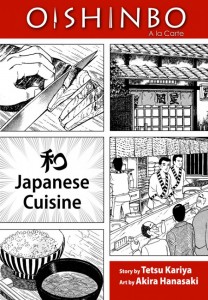 10. Oishinbo a la Carte
10. Oishinbo a la Carte
Story by Tetsu Kariya • Art by Akira Hanasaki • VIZ Media
Equal parts Iron Wok Jan, Mostly Martha, and The Manga Cookbook, this educational, entertaining series explores Japanese cuisine at its most refined — sake, seabream sashimi — and its most basic — rice, pub food. The stories fall into two categories: stories celebrating the important role of food in creating community, and stories celebrating the culinary expertise of its principal characters, newspaperman Yamaoka Shiro and his curmudgeonly father Kaibara Yuzan. (Fun fact: Yuzan is such a food snob that he drove Yamaoka’s mother to an early grave, causing an irreparable break between father and son.) Though the competition between Yamaoka and Yuzan yields some elegant, mouth-watering dishes, Oishinbo is at its best when it focuses on everyday food in everyday settings, shedding light on how the Japanese prepare everything from bean sprouts to ramen. Warning: never read on an empty stomach! (Click here for my review of Oishinbo A la Carte: Japanese Cuisine; click here for my review of Oishinbo A la Carte: Vegetables.)
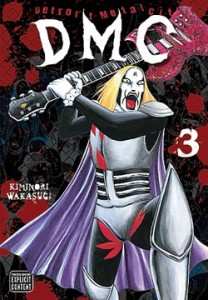 9. Detroit Metal City
9. Detroit Metal City
By Kiminori Wakasugi • VIZ Media
Satirizing death metal is a bit like shooting fish in a barrel: how hard can it be to parody a style associated with bands named Cannibal Corpse or Necrophagia? Poking fun at death metal while respecting the sincerity of its followers, however, is a much more difficult trick to pull off. Yet Kiminori Wakasugi does just that in Detroit Metal City, ridiculing the music — the violent lyrics, the crudely sexual theatrics — while recognizing the depth of DMC fans’ commitment to the metal lifestyle. Though the musical parodies are hilarious, the series’ funniest moments arise from classic fish-out-of-water situations: Negishi driving a tractor on his parent’s farm while dressed as alter ego Lord Krauser (complete with make-up, fright wig, and platform boots), Negishi bringing a fruit basket to a hospitalized DMC fan while dressed as Krauser… you get the idea. Rude, raunchy, and quite possibly the funniest title VIZ has licensed since Even a Monkey Can Draw Manga. (Click here for my review of volume one; click here for my review of volumes two and three.)
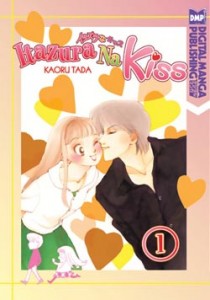 8. Itazura Na Kiss
8. Itazura Na Kiss
By Kaoru Tada • Digital Manga Publishing
In the twenty years since Itazura Na Kiss first appeared in Margaret, Kaoru Tada’s breezy romantic comedy has been widely imitated, but seldom surpassed. The story is as basic as they come: an airhead falls in love with a genius, is rebuffed by him, and is eventually pursued by him when he realizes just how sincere and kind she is. Tada manufactures a ridiculous situation to bring her characters together under the same roof — earthquake ahoy! — yet the story never devolves into brainless sitcom territory, thanks to her large supporting cast of characters, brisk comic timing, and strategic use of humor to reveal the characters’ true natures. Pure shojo bliss. (Click here for my review of volume one.)
 7. Gogo Monster (VIZ Media)
7. Gogo Monster (VIZ Media)
By Taiyō Matsumoto • VIZ Media
Every elementary school has a kid like Yuki, a smart, odd student who says things that unsettle classmates and teachers alike. In Yuki’s case, it’s the matter-of-fact way he reports seeing monsters that leads to his social isolation. Newcomer Makoto doesn’t share Yuki’s vision, but he admires Yuki’s nonchalant attitude, and struggles mightily to understand what makes his friend tick. It’s to Taiyo Matsumoto’s credit that we’re never entirely sure what aspects of the story are intended to be real, and which ones might be unfolding in the characters’ heads; Yuki’s monsters remain largely unseen, though their presence is felt throughout the story. Matsumoto’s stark, primitive style suits the material perfectly, inoculating Gogo Monster against the sentimentality that imaginary friends and childhood fears inspire in so many authors.
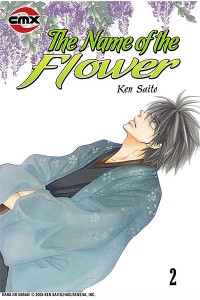 6. The Name of the Flower
6. The Name of the Flower
By Ken Saito • CMX Manga
Had the Bronte sisters been born in twentieth-century Japan instead of nineteenth-century England, they might have penned something along the lines of The Name of the Flower, a tear-jerker about a young woman who falls in love with her guardian. Ken Saito employs many favorite Victorian tropes — muteness, garden imagery, orphans — in service of the plot, creating an atmosphere of palpable yearning that will be familiar to anyone who’s read Jane Eyre or Wuthering Heights. For all of its Victorian window-dressing, however, The Name of the Flower favors a slice-of-life approach over crazy-wives-in-the-attic melodrama. (Well, almost; the main love interest is a misanthropic — but hot! — novelist who favors yukatas over jeans, is prone to fits of anger, and writes dark, pessimistic fiction.) Saito’s elegant, understated art is the perfect complement to this delicate drama, making good use of floral imagery to underscore the heroine’s emotional state. For my money, the best new shojo manga of 2009.
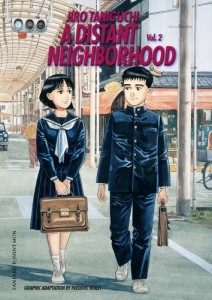 5. A Distant Neighborhood
5. A Distant Neighborhood
By Jiro Taniguchi • Fanfare/Ponent Mon
A Distant Neighborhood is a wry, wistful take on a tried-and-true premise: a salaryman is transported back in time to his high school days, and must decide whether to act on his knowledge of the past or let events unfold as they did before. We’ve seen this story many times at the multiplex — Back to the Future, Peggy Sue Got Married — but Taniguchi doesn’t play the set-up for laughs; rather, he uses Hiroshi’s predicament to underscore the challenges of family life and the awkwardness of adolescence. (Hiroshi is the same chronological age as his parents, giving him special insight into the vicissitudes of marriage, as well as the confidence to cope with teenage tribulations.) Easily one of the most emotional, most intimate stories Taniguchi’s ever told.
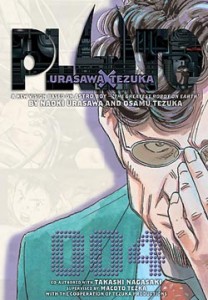 4. Pluto: Urasawa x Tezuka
4. Pluto: Urasawa x Tezuka
By Naoki Urasawa • VIZ Media
What amazes me the most about Naoki Urasawa is his ability to transform a tried-and-true genre like the whodunnit into a vehicle for exploring deeper questions about human nature, morality, and identity. As he did with the equally compelling Monster, Urasawa starts in familiar territory — in this case, a murder investigation — but quickly takes the story in unexpected directions, pausing to fill us in on the interior lives of both the principal and secondary characters — no mean feat, given that many cast members are, in fact, robots. Though Pluto takes its inspiration from “The Greatest Robot on Earth,” a short story within Osamu Tezuka’s long-running Astro Boy series, you don’t need to know anything about the original to appreciate the smart pacing, crisp artwork, or intelligent dialogue. In almost any other year, Pluto would have been my #1 pick; it’s a testament to the depth and breadth of 2009’s new releases that it isn’t.
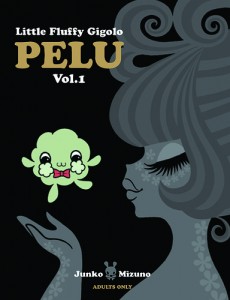 3. Little Fluffy Gigolo Pelu
3. Little Fluffy Gigolo Pelu
By Junko Mizuno • Last Gasp
Poignant is a word I seldom use to describe Junko Mizuno’s work, given the frequency with which her characters pop pills, wield chainsaws, and whip each other. But Little Fluffy Gigolo Pelu is poignant, a perversely sweet and sad meditation on one small, sheep-like alien’s efforts to find his place in the universe. In richly detailed images — if one can use the phrase “richly detailed” to describe artwork that draws its inspiration from Hello Kitty, My Little Pony, and Faster, Pussycat! Kill! Kill! — Mizuno offers one of the most bizarre, most original variations on that chick-lit staple, the quest to find a mate before one’s biological clock runs out. It’s not entirely clear how Mizuno expects her audience to react to Little Fluffy Gigolo Pelu — as a social satire? a tragedy? a Sanrio promotion? — but the clarity and appeal of her vision is undeniable. (Click here for my review of volume one.)
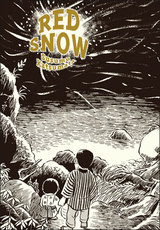 2. Red Snow
2. Red Snow
By Susumu Katsumata • Drawn & Quarterly
Through a series of ten vignettes, Red Snow depicts life in pre-industrial Japan, when men depended on the sea, the forest, and the field for their survival. Kappa and kitsune mingle freely with humans in Susumu Katsumata’s world, their presence treated as a matter of fact, rather than something extraordinary — a reflection of man’s close relationship with the natural world. Though Katsumata employs a self-consciously primitive style, the stories are neither bleak nor condescending towards their subjects; if anything, Katsumata’s drawings of farmers, woodcutters, and drunken monks have a rude vigor that reflects the resilience of his characters.
 1. Children of the Sea
1. Children of the Sea
By Daisuke Igarashi • VIZ Media
Children of the Sea defies easy categorization; it’s a high-seas adventure, an exploration of pan-Asian mythology, a cautionary tale about the environment, and a meditation on the ocean as a life-giving force. Though Children of the Sea could easily devolve into mystical hoo-ha — two of its characters were raised by dugongs, for Pete’s sake — Igarashi embeds a coming-of-age story within the main narrative that grounds Children of the Sea in everyday experience, even as the plot takes a turn for the fantastic. (See “raised by dugongs,” above.) Igarashi’s naturalistic art captures the beauty and strangeness of the ocean settings, as well as the sheer diversity of undersea life; you won’t soon forget the site of a sea turtle leaving a starry trail in its wake or the image of a young boy hitching a ride on a humpback whale. Eerie and poetic. (Click here for my review of volume one.)
HONORABLE MENTIONS
Done because there are too menny… great manga, that is, to confine myself to a traditional top ten list. With apologies to Thomas Hardy, here are some of the other manga that tickled my fancy in 2009:
- Best Continuing Series: Black Jack (Vertical, Inc.) and Real (VIZ Media)
- Best Dressed Characters: The History of the West Wing (Yen Press)
- Best Final Volume: Emma (CMX)
- Best Guilty Pleasure: Cat Paradise (Yen Press)
- Best Kid-Friendly Title: Dinosaur Hour (VIZ) and Leave it to PET! The Misadventures of a Recycled Super-Robot (VIZ)
- Best License Rescue: Yotsuba&! (Yen Press)
- Best Manhwa: Small-Minded Schoolgirls (NETCOMICS)
- Best New Manga That’s Already on Hiatus: The Manzai Comics (Aurora)
- Best Prose Novel Released by a Manga Publisher: The Cat in the Coffin (Vertical, Inc.)
- Best Reprint Edition: Clover (Dark Horse)
- Best Substitute for Television: Fire Investigator Nanase (CMX)
- Best Translation of a Dense, Culturally-Specific Text: Sayonara, Zetsubou-Sensei: The Power of Negative Thinking (Del Rey)
- Best Use of Wagner in a Manga: Ludwig II (DMP)
- Best Yaoi: Future Lovers (Aurora/Deux)
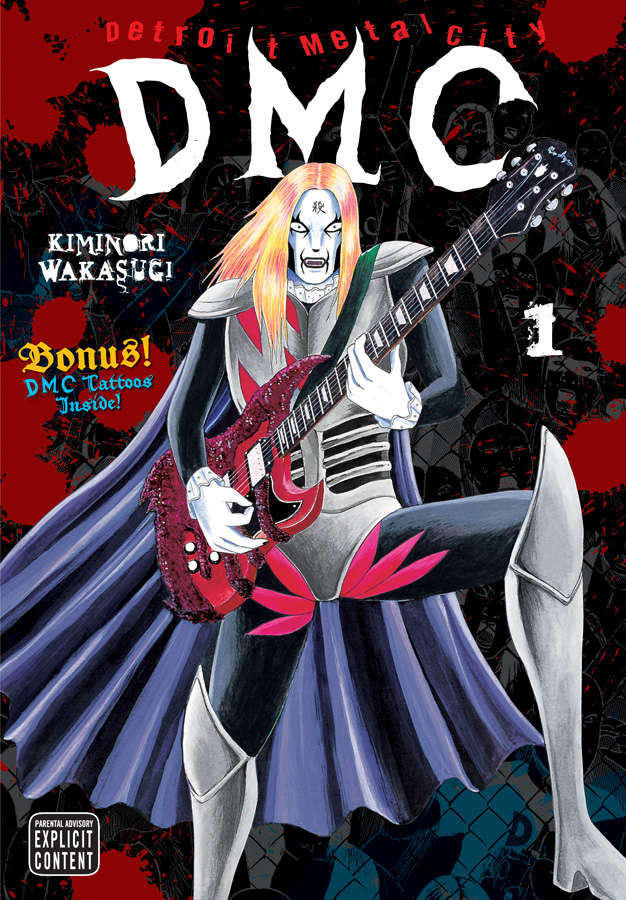


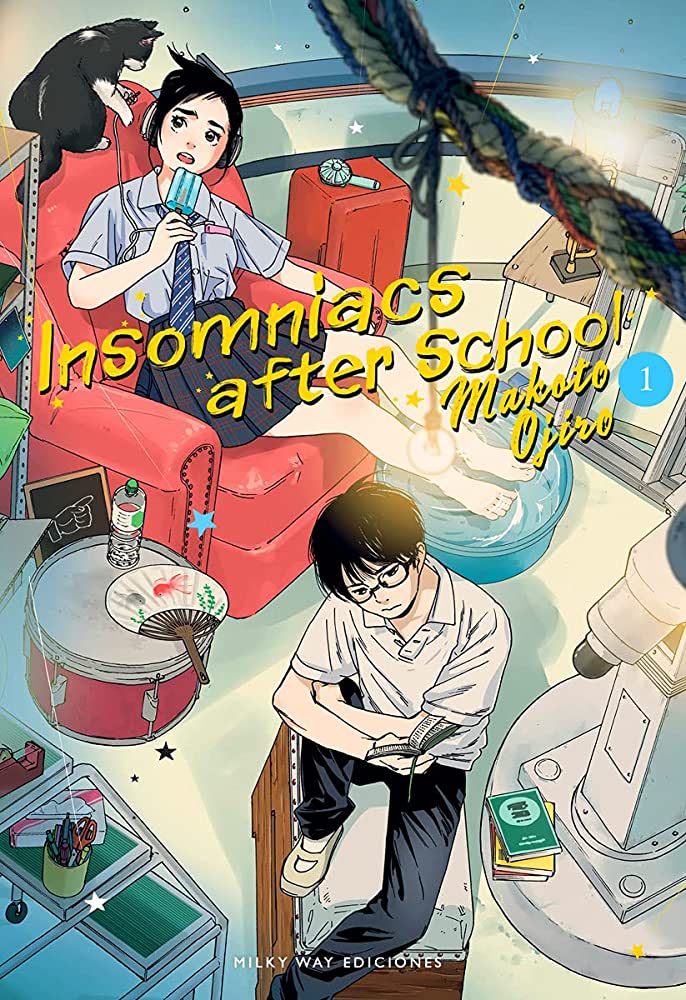
david brothers says:
I have four out of your top ten. Children of the Sea, Pluto, Red Snow, and Gogo Monster, though I haven’t the latter two yet.
I really, really need to pick up Real, though. I’m saving it for when I’m all caught up with Vagabond’s Vizbig books.
Katherine Dacey says:
Phew! My judgement isn’t as whack as I thought.
Are you planning to do a top ten list? I’d be really curious to see it, as you’re one of the few folks who can talk knowledgeably about manga and comics. I toyed with the idea of doing such a list, then realized most of the comics I’d read this year were aimed at kids. I figured my list would be too heavy on talking animals and too light on the kind of stuff that reassures serious fans that I’ve heard of Stitches and Asterios Polyp.
By the way, I can’t say enough good things about Real: great art, great storytelling, memorable characters. If you’re any kind of hoops fan, you’ll enjoy it even more.
Jade says:
I was surprised to see DMC on your list. I thought I remembered you being pretty close to dropping it with the second volume.
Katherine Dacey says:
If you go back and look at my review of volumes two and three, I gave DMC high marks; I was just a little quicker to point out the series’ flaws. In the comments, I went back and forth with a reader who wasn’t very keen on it. I agreed with her that the series is episodic — sometimes snarf-your-tea funny, sometimes not — but I think I was still pretty positive about it. Maybe that’s what you’re remembering? (And jeez, your memory is scary-good!)
Anyway, thanks for reading, and for taking the time to respond! It’s always nice to see familiar names popping up in the comments section.
Rippke says:
No love for 20th Century Boys?
Katherine Dacey says:
I know, I know — what kind of manga critic am I? I debated whether or not to include 20th Century Boys, but ultimately went with my gut and selected Pluto for the list. It’s testament to how many good titles were released this year that I actually had two Urasawa titles to choose from. Now there’s a problem I’d like to have every year!